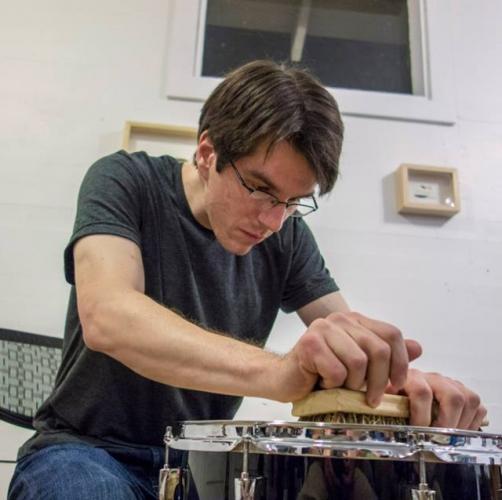Tim Feeney
Tim Feeney composes, improvises, and builds environments in and for forests and grain silos, specifically concerned with unstable sound and duration. He appears in bookstores and basements with Sarah Hennies and Greg Stuart as the trio Meridian; in galleries and libraries with Vic Rawlings and Annie Lewandowski; in colleges and museums with Andrew Raffo Dewar, Holland Hopson, and Jane Cassidy; and in the occasional festival or concert hall with Anthony Braxton and Ingrid Laubrock. He is a faculty member in percussion, improvisation, and composition at the California Institute of the Arts.
Resonant Spaces
"Resonant Spaces" is a series of installation works using resonant “speaker-objects” built by attaching small speakers to snare drums. The sounds of these hybrid electronic and acoustic instruments activate the resonant frequencies of their locations, delineating the physicality of a surrounding environment defined by architecture and materiality.
Previous pieces in the series engaged aspects of recollection and conjectured history concerning the unique properties of their siting, whether the massive reverberant acoustic of a grain silo complex in Buffalo, New York, ca. 1925; the operational sound of the twin steam engines pumping Boston's drinking water, ca. 1900; and tracking the coastal erosion of Sarasota, Florida, from 1987 to 2015. In "Angels Gate," for Soundpedro 2019, I will stage sounds around the common path from the Cultural Center to the Battery Leary-Merriam, such that an observer standing at one beacon can barely hear the sound of a neighbor. Their sounds arrange themselves in the form of a clock, such that different beacons arrive together at the quarter and half hour. When all four speak at the top of the hour, their combined sound reproduces the spectrum of the Korean Friendship Bell.
Participants listening to a beacon experience the interaction between nearby and far-away reflections, engaging, simultaneously, the acoustic reality of their immediate location, and a wider geography defined by memory of the others. This generates an imagined sonic topography operating at an expanse both unpredictable and too large to fully grasp at any individual instant.

